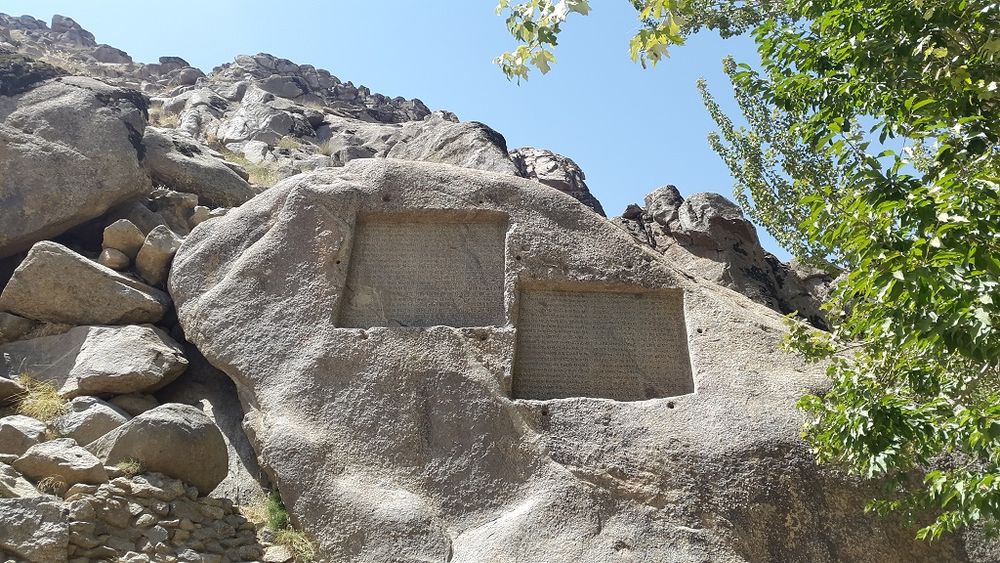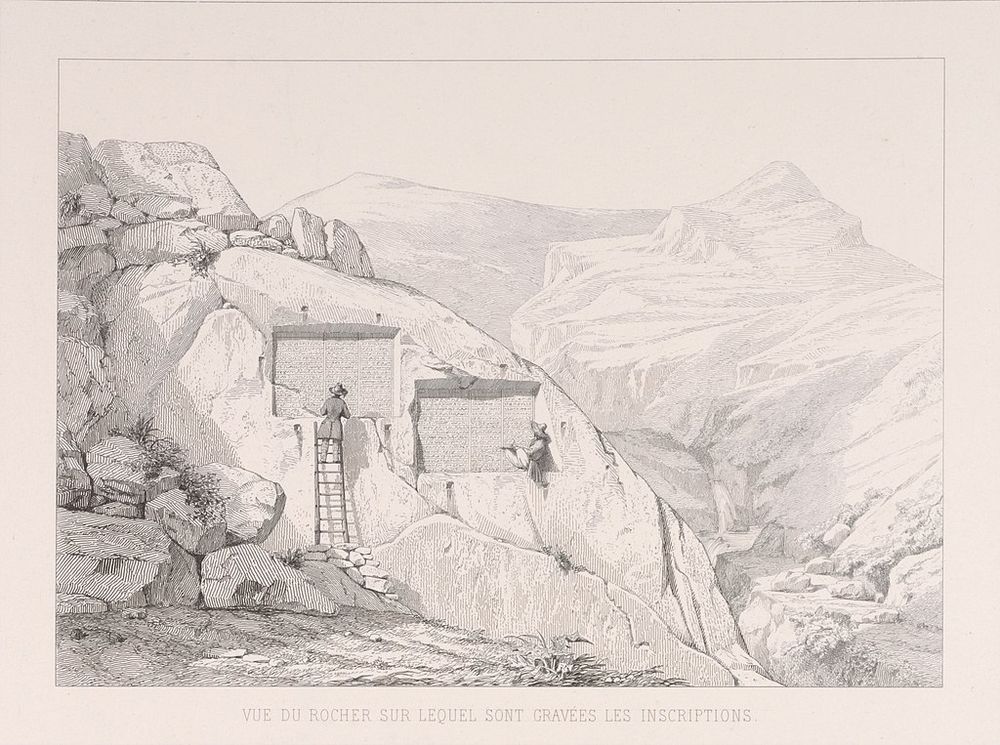They are cuneiform inscriptions made in the time of Darius I the Great and his son Xerxes I.
The Ganj Nameh Inscriptions.
They are flanked by holes, which probably served to secure some kind of protective cover.

There is also a terrace carved into the rock above the inscriptions.
Drawing by Eugene Flandin showing the inscriptions in 1839.
Both are trilingual as was usual for Achaemenid inscriptions since Darius I.

Old Persian cuneiform is the most recent of the three writing systems, requiring only 34 characters.
By contrast, Elamite and Babylonian required 200 and 600 characters respectively, since they were syllabic scripts.
The inscription of Darius, on the left, and that of Xerxes, on the right.

Photo:Behzad Alipur/Wikimedia
This article was originally published inLa Brujula Verde.
It has been translated from Spanish and republished with permission.
